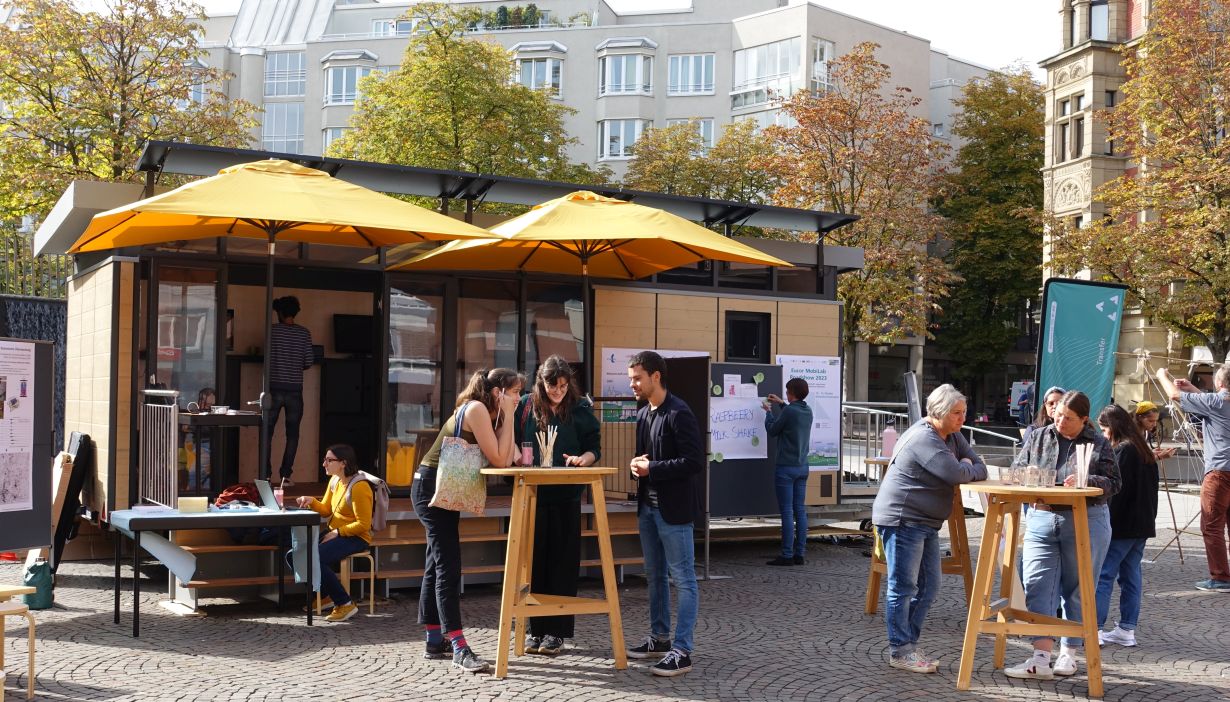The massive contact restrictions in the wake of the Covid-19 pandemic have also presented real-world laboratories with difficult situations. In the DuPa project, launched in 2020, researchers from the Karlsruhe Transformation Centre for Sustainability and Cultural Change (KAT), which is based at the Karlsruhe Institute of Technology (KIT), have turned this crisis into an opportunity. Within three years, they developed new formats that combine digital and personal participation opportunities. These permanently increase the inclusivity of real-world laboratories by enabling the participation of people who are unable or unwilling to take part on site.
Fear of infection, compulsory masks, closures: Until 2022, the typical on-site exchange between scientists on the one hand and interested citizens on the other had largely come to a standstill. This is where the "DuPa - Dual Mode Participation: Window of Opportunity for Inclusive Real-World Labs" project came in: The aim of the researchers at KAT was to develop new, more inclusive participation formats.
"As elsewhere, Covid has escalated existing problems," says sociologist Pia Laborgne from the Institute for Technology Assessment and Systems Analysis (ITAS) at KIT.
She led the now completed project, the results of which are being disseminated. "Even before the pandemic, it was clear that we needed to involve broader sections of the population in the face of a challenge such as the sustainability transformation."
Increased Diversity in Real-World-Laboratories
As a result, the researchers developed and tested a series of dual participation formats that make citizen participation more diverse and more representative. For example, they used the "MobiLab" mobile participation laboratory, which was created at KIT in 2021, as a place for hybrid encounters - in the centre of cities and via the internet. On a tour through the marketplaces of the EUCOR region, the mobile tiny house proved to be a multifunctional platform for participatory research, citizen science and science communication.
The researchers tested another innovative approach in a map-based online survey on the topic of heat in the city. A so-called participatory mapping was used. This combines spatial data with the perceptions of local citizens. The method, which is familiar from urban and regional planning, was further developed for real-world laboratories.
A Blog as a Methods Exchange
The DuPa project also explored the mix of analogue and digital in two exchange workshops held jointly with the Urban Europe Research Alliance. An online forum of the "Quartier Zukunft" real-world laboratory, also run by KIT, in which citizens came together to discuss the topic of balcony power plants, as well as other real-world laboratory initiatives, such as the "GrüneLunge" project, provided illustrative material from practice.
Charakteristisch für das DuPa-Projekt war darüber hinaus der Akzent auf einem Austausch nationaler sowie europäischer Expertinnen und Experten über hybride Formen der Partizipation. Zu diesem Zweck wurde auf den Seiten des nationalen Netzwerks Reallabore der Nachhaltigkeit der Blog „Möglichkeitsfenster“ ins Leben gerufen. Mit zahlreichen Beiträgen in Form von Podcasts, Videos, Interviews und Texten hat sich der Blog zu einer Plattform für die Kommunikation neuer Ansätze der Beteiligung in transdisziplinärer Forschung entwickelt.
The DuPa project was also characterised by a focus on an exchange between national and European experts on hybrid forms of participation. To this end, the blog "Möglichkeitsfenster" was launched on the website of the national network ´Reallabore der Nachhaltigkeit'. With numerous contributions in the form of podcasts, videos, interviews and texts, the blog has developed into a platform for communicating new approaches to participation in transdisciplinary research.
Further Information:
Project page
Being “The Research University in the Helmholtz Association”, KIT creates and imparts knowledge for the society and the environment. It is the objective to make significant contributions to the global challenges in the fields of energy, mobility, and information. For this, about 10,000 employees cooperate in a broad range of disciplines in natural sciences, engineering sciences, economics, and the humanities and social sciences. KIT prepares its 22,800 students for responsible tasks in society, industry, and science by offering research-based study programs. Innovation efforts at KIT build a bridge between important scientific findings and their application for the benefit of society, economic prosperity, and the preservation of our natural basis of life. KIT is one of the German universities of excellence.

